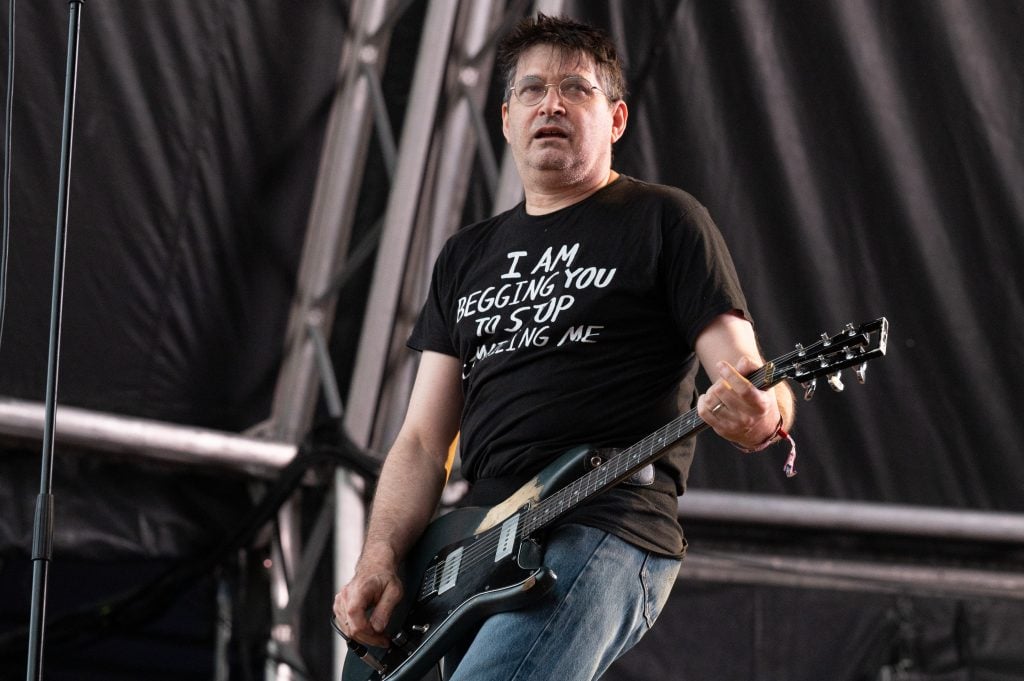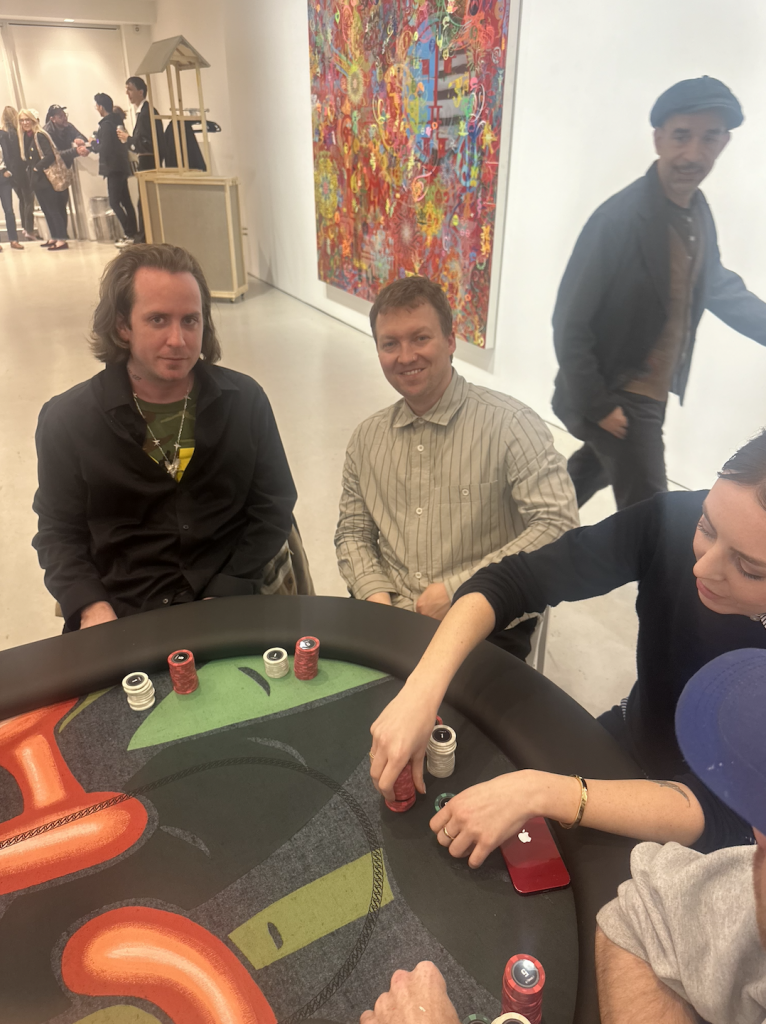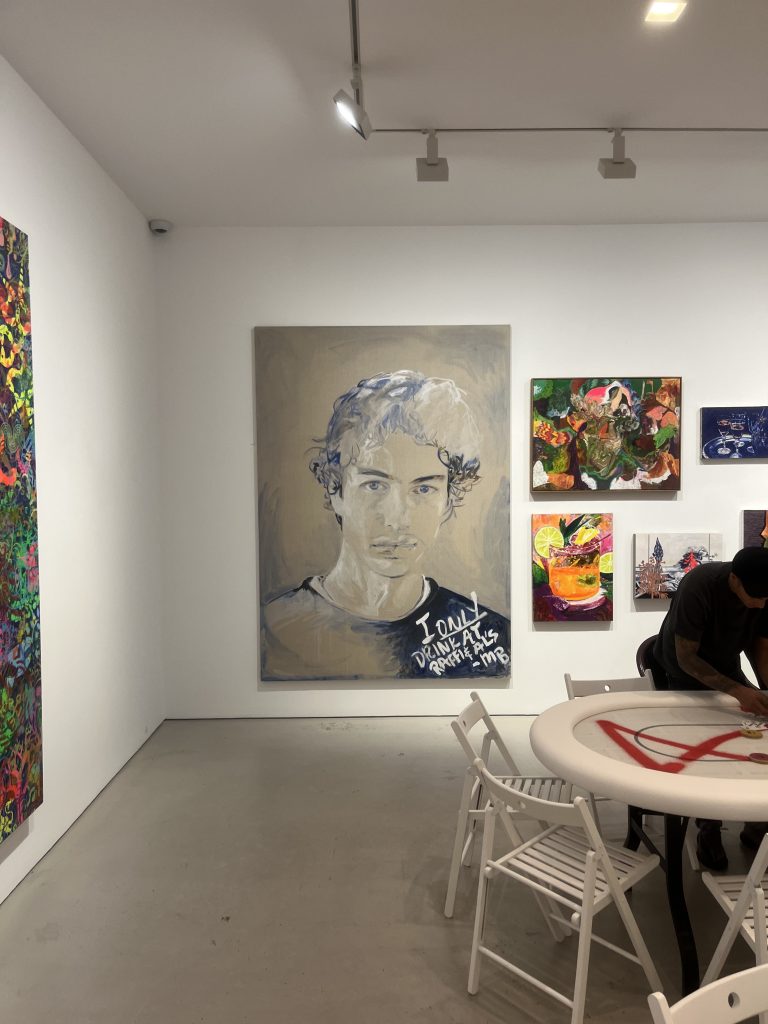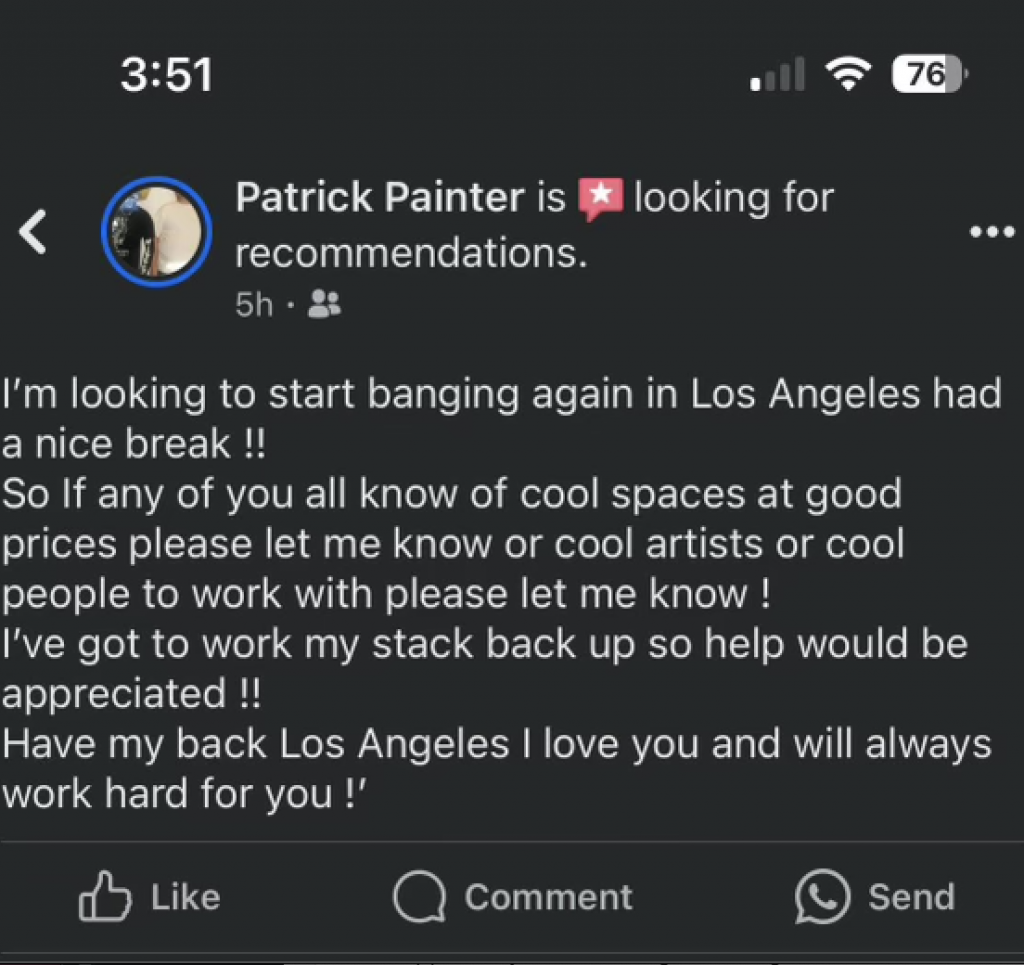Wet Paint
Artists and Curators Remember Music Legend Steve Albini, and More Art World Gossip
Plus, the art industry's poker obsession intensifies.

Plus, the art industry's poker obsession intensifies.

Annie Armstrong

Every week, Artnet News brings you Wet Paint, a gossip column of original scoops. If you have a tip, email Annie Armstrong at [email protected].
Yesterday, the creative class suffered a great loss, with the death of the storied music engineer, critic, and guitarist Steve Albini at the age of 61 of a heart attack. Many in the music industry paused to pay their respects, and I’ve also been coming across a number of art types who were huge fans.
If you are not familiar with Albini’s work—well, you actually might be. Aside from his own projects, like Big Black and Shellac, he produced many of the most respected rock albums of the 1980s, ’90s, and 2000s, like the Pixies’ Surfer Rosa (1988), Nirvana’s In Utero (1993), and my personal favorite, Songs: Ohia’s masterpiece Magnolia Electric Co. (2003). A raw, intimate, in your-face feel defines his no-frills, guitar-forward efforts.
Along the way, Albini developed a cult following for his caustic commentary on the music industry and its parasitic nature. His 1993 essay for The Baffler, “The Problem With Music,” is a sacred text among critics of the music industry, breaking down how much better off a musician would be financially working at a 7/11 than receiving a $250,000 advance from a major record label.
“I think I‘ve gotten more Albini-esque over the years,” art critic Domenick Ammirati said of the producer, who was notorious for his unvarnished (and sometimes uncollegial) opinions. “I was amazed at and admiring of his ability in more recent years to disavow the truly lousy things he had said in the past without losing his caustic edge.”
Artist Andrew Kuo said that he saw Albini as a bit of a “cautionary tale,” writing that “his work specificities and habits were legendary, along with his fixation on being humble, but after a few decades, we loved the idea of Nirvana more than their songs.” He added, “I shy away from blue-collar worship, but his obsessive qualities probably appeal to artists.”
Many working artists (and artist assistants) could certainly connect to Albini’s work ethic. Jacques Louis Vidal, who has a show up at Broadway Gallery, told me that what he learned from Albini’s musical output was “that your medium can, and should vary wildly because your spirit will come through more strongly if you’re always pushing forward” and “that your sound (or style) can be brutal and punishing while still creating a sense of relief, and joy.”
Jeffrey Joyal, who shows with David Lewis Gallery in New York, said, “It is hard for me to think of an artist with a truer moral compass who has had more of an influence on my ethos.”
Curators were taken with him, too. Kelly Taxter, the deputy director of New York’s Artists Space, eulogized him on her Instagram. Albini “produced some of my all-time favorite albums,” she wrote. “More importantly, he taught me that loving your work is far more important than the bottomless, cold, and empty pit of loving money.”

Dealers Will Shott and Ian Glover play poker at Miles McEnery Gallery. Photo by Casey Gleghorn.
There is no better time to spot a trend than during an art fair, as dealers unveil new work at their booths and galleries open new exhibitions. Last week, during Frieze New York, fountains were suddenly hot: Maurizio Cattelan at Gagosian, Niki de Saint Phalle at Salon 94, Shuang Li at Swiss Institute. As more fairs run in the city this week, another trend coming is becoming clear: gambling. The art world has a habit, and it is getting serious.
For years now, the Los Angeles art world has been leading the way. The World Series of Art Poker, which always runs in tandem with Frieze Los Angeles, has been hosted by some of the city’s most successful artists, like Jonas Wood, Mark Grotjahn, and Matt Johnson. This month, the Times declared, “The storied L.A. poker scene—an obsession Tinseltown has self-mythologized since the Wild West—these days belongs to the emergent DIY art world.”
But now New York is entering the playing field. Last summer, I got up close and personal with a poker league that cropped up in the basement of the Bowery gallery Amanita. And on Saturday night, art dealers, collectors, and artists huddled together at Miles McEnery Gallery in Chelsea for some poker (after a fairly lean fair week, as far as sales go, it has to be said).
The poker evening was organized by Jason Roussos, a collector who runs the clothing/gambling-events company Casinola, which has been staging a string of recent DIY tournaments in Los Angeles. “Gallerists and collectors are both risk-takers when it comes to finances, which is cohesive to the game of poker.” Roussos told me. “And artists really enjoy it because it’s a game that allows you to be creative, while taking risks.”
“The fair was bleak,” said Casey Gleghorn, the proprietor of Henry Street’s No Gallery, which participated in NADA New York last week. “But poker was fun!”

The Miles McEnery Gallery in Chelsea during last week’s poker game. Courtesy of Will Shott.
Other gallerists on hand included Will Shott (from www.willshott), Blade Study’s Ian Glover, and Eric Kim (who runs Bel Ami and Human Resources in L.A.). Veteran poker-playing artist JPW3 and indie filmmaker Eugene Kotlyarenko were there, too. The buy-in was $100. Players sat at tables designed by Joel Mesler, artist Jaki Doyka drew them live, as they were dealt their hands, and according to Shott, “There was a huge portrait of Matthew Brown staring at you the whole time… it was fun, though.” (That work was made by Alberto Cuadros. The gallery’s upcoming group show, “Overserved,” was already on its walls.)
Poker has a checkered history in the New York art world, of course. Dealer Helly Nahmad‘s illegal operation got him a year in prison about a decade ago—but President Trump, a man of mercy, pardoned him right before he left office.
“For a lot of people, it’s a form of escapism,” said Kim, who helped organize the game. “There’s an aesthetic around being a poker player that appeals to artists. And it’s a thinking game where you’re pushing back against luck.” He agreed that the art world has gotten in deep. “I heard that François Ghebaly doesn’t schedule a Saturday opening anymore because he wants to play,” he said.
That is true. “Yes,” Ghebaly told me in an email, “I’m a recreational player, but now I try to keep my Frieze Saturday open for the poker tournament, it’s become the highlight of the week.”
Ghebaly went on: “Poker and the art world are a perfect match: a motley crew of passionate and eccentric personalities ready to go broke for their hands. It’s emotional, and it’s usually a blast, especially when I don’t lose.”
The action in Chelsea continued until 2 a.m., at which point everyone called it quits. During a two-week run of art fairs, Sunday was going to be a workday for many of those on hand.

Courtesy a tipster.
Old-school Los Angeles dealer Patrick Painter is looking to rejoin Tinseltown’s gallery scene, according to an achingly wholesome Facebook status he posted… Cady Noland’s New York show has opened at Front Desk Apparatus with one piece for sale (and no involvement from the famously reclusive artist)… Dramatic-garb-loving actor Jared Leto was notably absent from this year’s Met Gala, but he was spotted at Sotheby’s auction preview this past weekend… Speaking of which, mega-collectors Amanda and Glenn Fuhrman were among the few art-world attendees at the gala, but they represented us elegantly… Artist Tracey Emin has been having some disturbing dreams lately, and posted about them on Instagram so that they can disturb us all as well… Hettie Judah has stepped down as chief art critic for The Independent… Next week at Sotheby’s, is anyone going to bid on Elizabeth Peyton’s watercolor portrait of Pavement frontman Stephen Malkmus for me? It’s a steal within its $50,000–to-$70,000 estimate… Artist Glenn Ligon is really doing a great job reporting on who is at what gala, via his Instagram (as I noted last week); his most recent stop on the charity-party circuit was this week’s Hammer Gala in Los Angeles. (If you’d like to guest spot a column, Glenn, my email is wide open)…